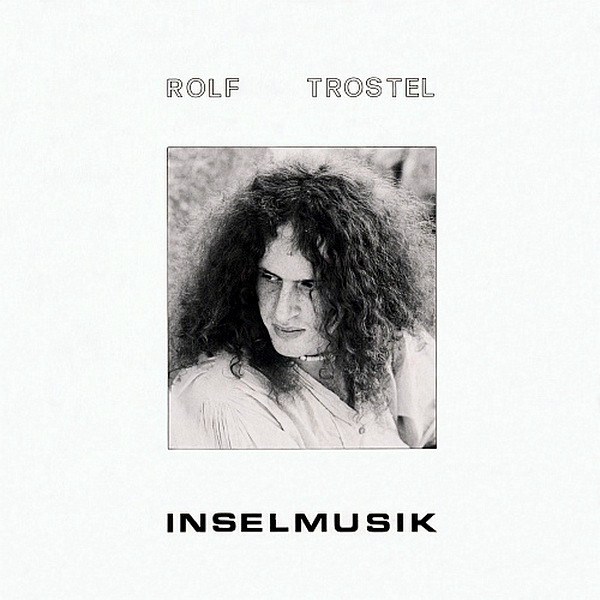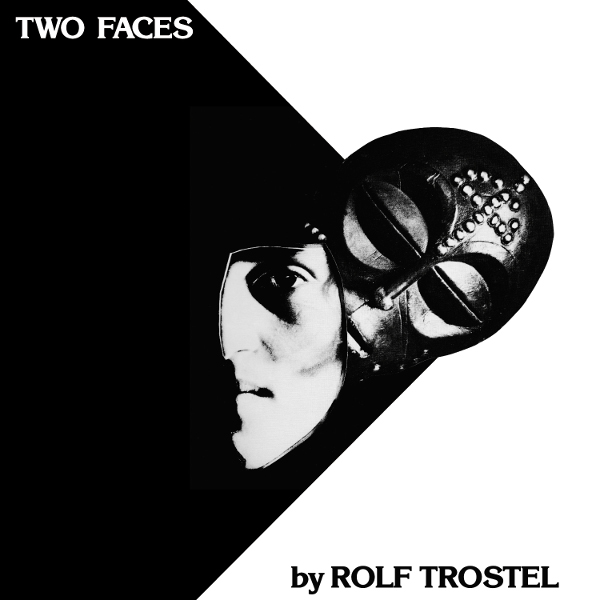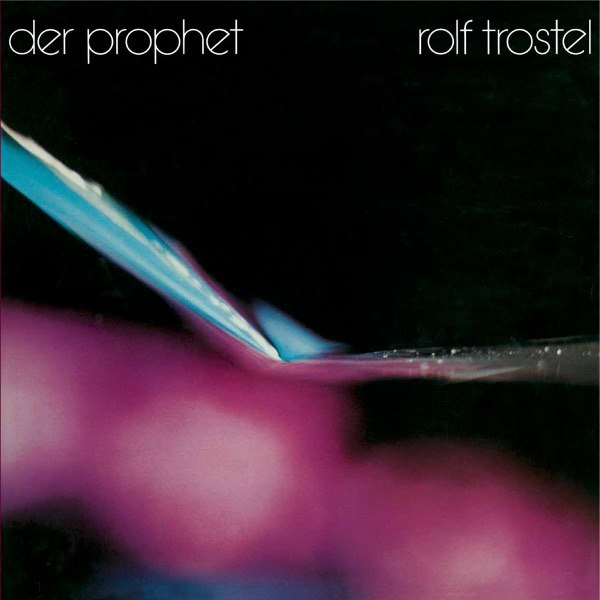
Exposé Online
What's old
Exposé print issues (1993-2011)
- 1 (October 1993)
- 2 (February 1994)
- 3 (May 1994)
- 4 (August 1994)
- 5 (October 1994)
- 6 (March 1995)
- 7 (July 1995)
- 8 (November 1995)
- 9 (March 1996)
- 10 (August 1996)
- 11 (February 1997)
- 12 (May 1997)
- 13 (October 1997)
- 14 (February 1998)
- 15 (July 1998)
- 16 (January 1999)
- 17 (April 1999)
- 18 (November 1999)
- 19 (May 2000)
- 20 (October 2000)
- 21 (March 2001)
- 22 (July 2001)
- 23 (December 2001)
- 24 (April 2002)
- 25 (September 2002)
- 26 (February 2003)
- 27 (August 2003)
- 28 (December 2003)
- 29 (April 2004)
- 30 (September 2004)
- 31 (March 2005)
- 32 (September 2005)
- 33 (May 2006)
- 34 (March 2007)
- 35 (January 2008)
- 36 (October 2008)
- 37 (July 2009)
- 38 (July 2010)
- 39 (Summer 2011)
Reviews
Rolf Trostel — Inselmusik
(Bureau B BB230, 1981/2016, CD/DL)
Rolf Trostel — Two Faces
(Bureau B BB231, 1982/2016, CD/DL)
Rolf Trostel — Der Prophet
(Bureau B BB232, 1982/2016, CD/LP)
by Henry Schneider, Published 2017-05-14



Rolf Trostel was a second generation member of the Berlin School of electronic music. In the late 70s and early 80s, Rolf worked as a distributor of the PPG Wave Computer 360 A, which provided him the opportunity to play and demonstrate the instrument. And essentially his debut album, Inselmusik, was a demonstration of the synth. Based on wavetable synthesis, the PPG Wave Computer had a highly distinctive sound that is so noticeable on Klaus Schulze’s middle period when he went digital starting with Dig It. Trostel recorded Inselmusik exclusively with the PPG, a sequencer, and a CR-78 drum computer in his home studio. The initial pressing of 1000 LPs sold out quickly, encouraging Trostel to continue. Inselmusik contains four instrumental tracks: “Testtanz,” “Art Meta,” “Ur Teil,” and “Skizo.” “Testtanz” has a steady beat and swirling electronics similar to Tangerine Dream. “Art Meta” relies heavily on sequencers and high frequency electronics with an abstract break that resolves into a new sequence and middle Eastern theme much like Klaus Schulze. “Ur Teil” is pure ambient Schulze. And the closing track “Skizo” is another Schulze inspired track that becomes abstract in the middle followed by an abrupt change to a new chord sequence.
For his next album, Two Faces, Trostel expanded his rack of instruments to include a Minimoog and a string synth. Just like Inselmusik, Two Faces features numerous synth runs that put the PPG 350 Computer Sequencer through its paces, often defining the chord progressions and song structures. One of the exciting features of this instrument was that the musician could invert the notes of the sequence with the press of a button or he could use the keyboard to transpose the sequence at the end of each note or each loop. Klaus Schulze unabashedly used this feature quite prominently, and that is why the music on Two Faces sounds quite a bit like Klaus Schulze. On Two Faces, Trostel wanted to move away from the meditative feel of Inselmusik and produce a more aggressive music. And he succeeded. The six instrumental tracks are quite percussive. In addition to the obvious Klaus Schulze references, there are also similarities to Peter Baumann’s Romance 76 and Vangelis’ Bladerunner soundtrack.
Trostel released his third album, Der Prophet, later that same year. This was the third and final chapter of Trostel’s PPG Wave Computer compositions. The sonic uniqueness and clanking sounds of wavetable synthesis still abound, but Trostel de-emphasized them in favor of the rhythm computer, Minimoog, and his string synth. He employed layered sounds with varying amounts of reverb and simpler sequencer lines. He also replaced his PPG 350 Computer Sequencer and Roland CR-78 drum machine with the then state of the art Roland TB-303 bass synth and step sequencer and the TR-808 drum machine. Der Prophet, with its six instrumentals was moving away from Klaus Schulze territory and more towards what Tangerine Dream was doing at the time. And Trostel started stretching musically with the quasi-industrial track “Individual Destiny” with its mechanical, large machine rhythms.
It is wonderful that Bureau B decided to reissue these three albums from the early 80s. And they will especially please the electronic music fan who just cannot get enough of early 80s Klaus Schulze.
Filed under: Reissues, 2016 releases, 1981 recordings, 1982 recordings
Related artist(s): Rolf Trostel
What's new
These are the most recent changes made to artists, releases, and articles.
- Review: Roz Vitalis - Dedication to BigNick
Published 2026-01-18 - Review: Olly Chalk - In Those Remote Stars
Published 2026-01-17 - Review: Jeff Pearce - Infinite Ambient: Winter Landscapes
Published 2026-01-16 - Release: Nektar - Mission to Mars
Updated 2026-01-15 11:59:57 - Release: Mordecai Smyth - Gather the Scattered Mind
Updated 2026-01-15 11:52:38 - Review: Trio of Bloom - Trio of Bloom
Published 2026-01-15 - Review: Barry Cleveland & Robert Rich - Elliptical Passage
Published 2026-01-14 - Release: Orchestra of the Upper Atmosphere - θ2
Updated 2026-01-13 23:09:38 - Release: Orchestra of the Upper Atmosphere - θ3
Updated 2026-01-13 23:07:05 - Release: Orchestra of the Upper Atmosphere - θ6
Updated 2026-01-13 22:55:18 - Release: Orchestra of the Upper Atmosphere - θ5
Updated 2026-01-13 22:52:03 - Release: Orchestra of the Upper Atmosphere - θ4
Updated 2026-01-13 22:47:05 - Release: Barry Schrader - Ambient : Aether
Updated 2026-01-13 22:29:29 - Review: Trinary System - The Hard Machine
Published 2026-01-13 - Release: Camahueto - Reflejos
Updated 2026-01-12 23:44:45 - Artist: Camahueto
Updated 2026-01-12 23:41:18 - Release: Danza de la Ira - Septies Kairos
Updated 2026-01-12 23:03:00 - Artist: Danza de la Ira
Updated 2026-01-12 22:56:20 - Release: Orchestra of the Upper Atmosphere - Orchestra of the Upper Atmosphere
Updated 2026-01-12 16:14:44 - Release: Orchestra of the Upper Atmosphere - θ7
Updated 2026-01-12 16:13:34
